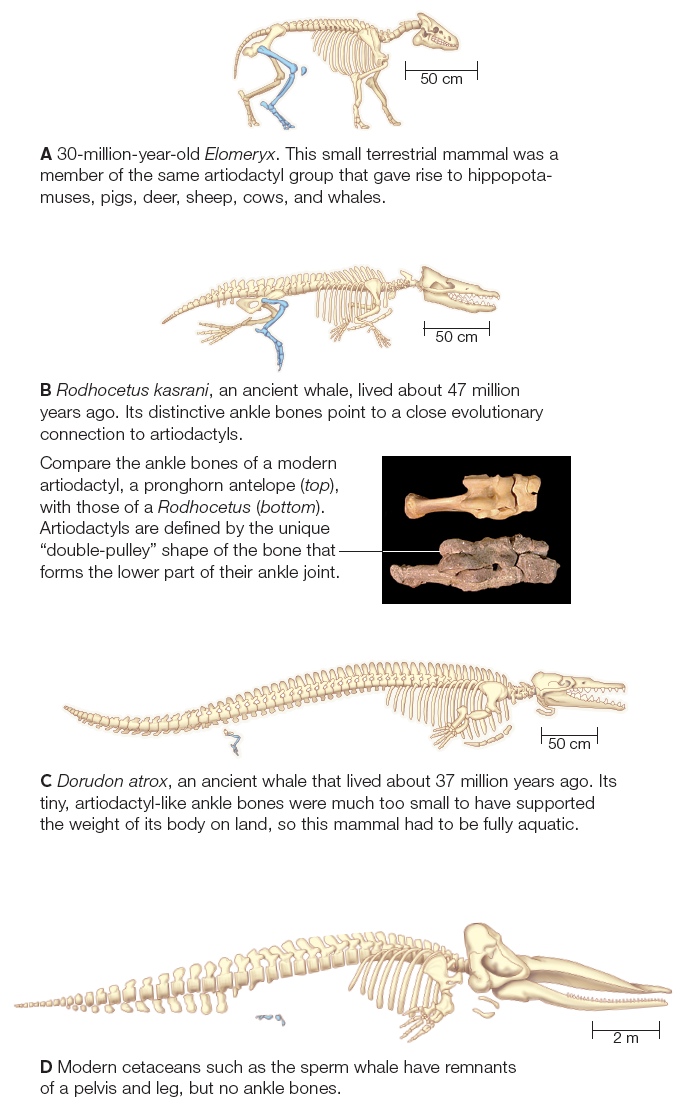 |
| Previous Image | Next Image |
| Description: 30-million-year-old Elomeryx. This small terrestrial mammal was a member of the same artiodactyl group that gave rise to hippopotamuses, pigs, deer, sheep, cows, and whales. Rodhocetus kasrani, an ancient whale, lived about 47 million years ago. Its distinctive ankle bones point to a close evolutionary connection to artiodactyls. Compare the ankle bones of a modern artiodactyl, a pronghorn antelope (top), with those of a Rodhocetus (bottom). Artiodactyls are defined by the unique “double-pulley” shape of the bone that forms the lower part of their ankle joint. Compare the ankle bones of a modern artiodactyl, a pronghorn antelope (top), with those of a Rodhocetus (bottom). Artiodactyls are defined by the unique “double-pulley” shape of the bone that forms the lower part of their ankle joint. Dorudon atrox, an ancient whale that lived about 37 million years ago. Its artiodactyl-like ankle bones were much too small to have supported the weight of its huge body on land, so this mammal had to be fully aquatic. Modern cetaceans such as the sperm whale have remnants of a pelvis and leg, but no ankle bones. Picture Stats: Views: 778 Filesize: 224.3kB Height: 1111 Width: 682 Source: https://biology-forums.com/index.php?action=gallery;sa=view;id=48575 Keywords: Evolution of the modern whale |
